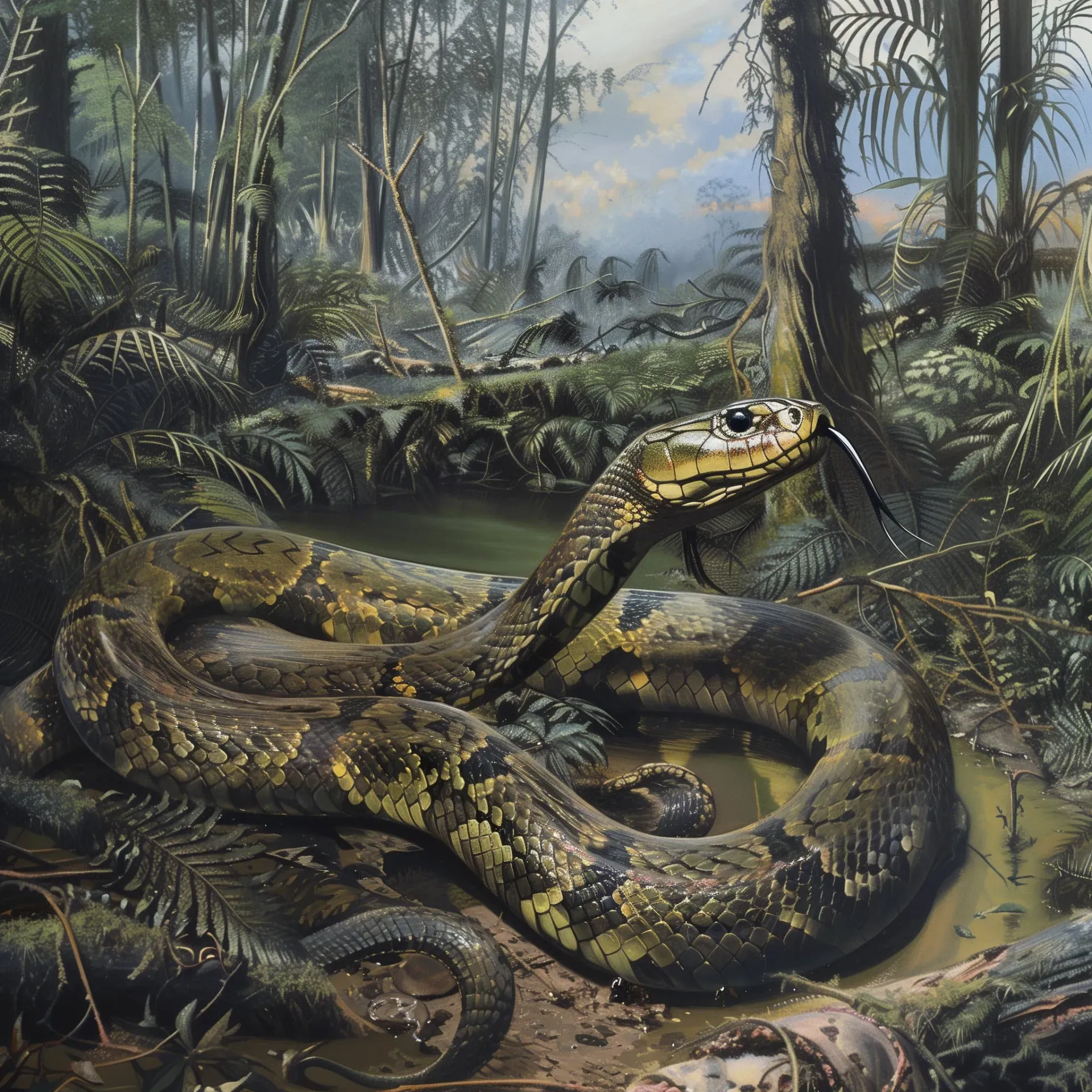Scientists have discovered the giant remains of a snake in the Indian state of Gujarat: it can now be recognized as the largest in the history of the world.
The length of the reptile could reach fifteen meters, while its weight was close to a ton. The find was given a symbolic name - Vasuki indicus (in honor of the giant snake Vasuki from Indian myths).
The ancient snake belonged to the Madtsoiidae, an extinct group of mostly Gondwanan land snakes that spanned about 100 million years from the Late Cretaceous to the Late Pleistocene.
"The Madtsoiidae family existed for about 100 million years, from the Late Cretaceous to the Late Pleistocene, and lived in a wide geographic range, including Africa, Europe, and India," said paleontologists Debajit Datta and Sunil Bajpai of the Indian Institute of Technology Roorkee.
 |
| Artist's impression of Vasuki indicus. Credit: sci.news |
"Vasuki indicus represents a lineage of large madtsoiids that originated in the Indian subcontinent and spread across southern Europe to Africa during the Eocene, approximately 56 to 34 million years ago."
"This is comparable in size to the longest known snake that ever lived, the extinct Titanoboa," the researchers said.
"The large size of Vasuki indicus made it a slow-moving, ambush predator similar to an anaconda."
"Biogeographic considerations, coupled with its interrelationship with other Indian and North African madtsoiids, suggest that Vasuki indicus represents a relict lineage that originated in India," they added.
"The subsequent India-Asia collision at 50 million years ago resulted in the intercontinental dispersal of this lineage from the subcontinent to North Africa through southern Eurasia."
"Recovery of additional material and new species, including large forms, may provide further insight into the systematics and biogeography of madtsoiids."
The study was published in Scientific Reports.
